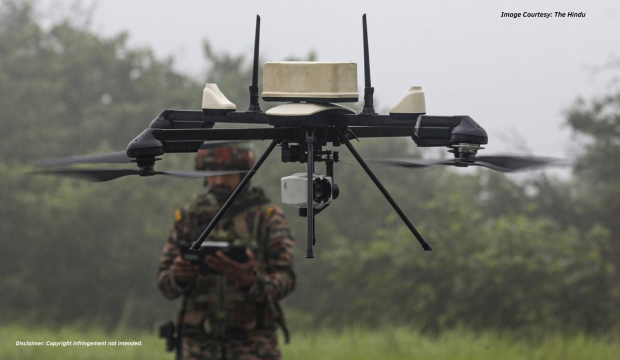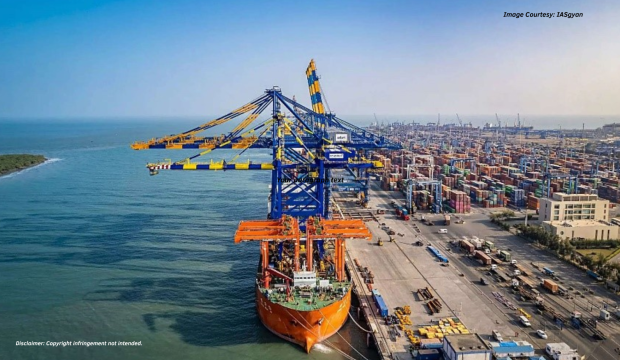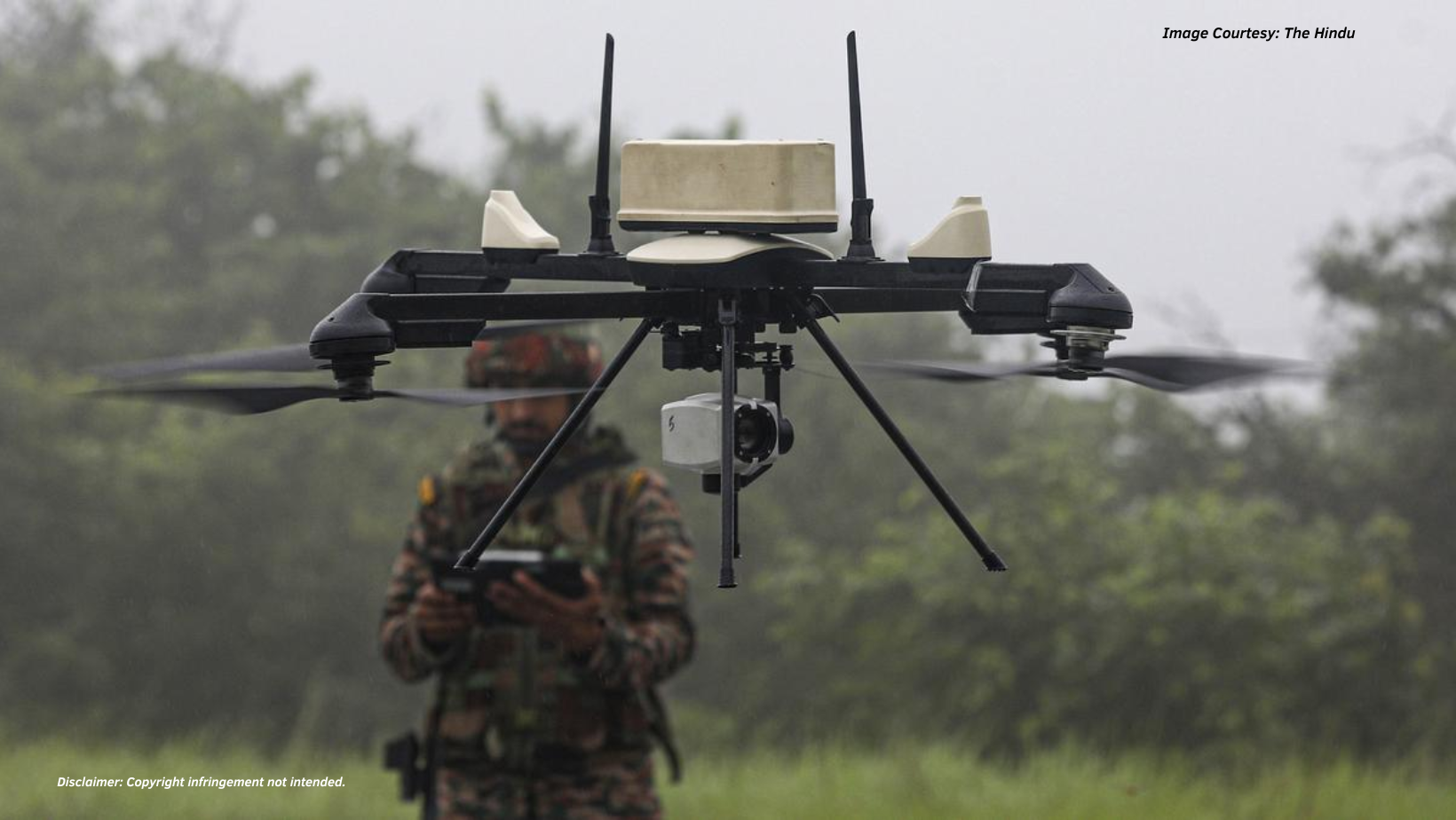Chinese Border Settlements (CBS) commonly known as Model Villages/ Xiaokang (moderately prosperous) Villages are the group housing schemes being developed by the Communist Party of China (CPC) for community living all along its border areas specially in the areas of TAR (Tibet Autonomous Region) opposite India. Though the nomenclature in vogue is CBS however, large number of such villages are also located beyond the tactical depth. It is part of a government led initiative aimed at poverty alleviation and rural development to showcase them as examples of successful rural revitalization meant to display modern infrastructure, improved living conditions and sustainable development practices. It is an ongoing process for around two decades whereinafter CBS have emerged as pivotal hubs of economic and geo-political significance in recent times.
It supports the Chinese government ambitious National Rural Revitalization Programme (2018-2035), which is implemented through five-year Rural Revitalization Strat Plans (RRS). The first phase of the current plan focuses on consolidating & sustaining recent gains in the eradication of absolute poverty through green agricultural development and modernization, rural infrastructure and public services delivery and rural governance improvement.[1] These settlements, strategically positioned along China’s extensive borders, play a crucial role in facilitating trade, cultural exchange and regional stability.
628 villages (427 first line and 201 second line villages) are to be constructed along the Indian border in Tibet, spanning from Ngari Prefecture, which borders Uttarakhand & Himachal Pradesh to Nyingchi, which borders Arunachal Pradesh. 354 villages out of the 427 front line villages are being constructed along the borders with Bhutan, Nepal and Arunachal Pradesh.[2]
Objective of CBS are to augment the border defense mechanism, encourage re-location of ex-servicemen & locals from mainland and promote harmonious living among various ethnic groups. Inhabitants from isolated hamlets & near vicinity of the proposed CBS site are the primary allotees of the houses in any CBS and the same is done under the aegis of provincial government. Allotment is done based on varied factors like domicile, socio-economic background, resettlement due to infrastructure projects or economic development initiatives, employment in local industries and political loyalty.
General Layout
CBS generally comprise of row houses constructed in an orderly fashion. Seemingly, each row house has gated entrance with a small lawn, kitchen, bedrooms and toilets. Size of row houses indicate that number of occupants generally differ from 06-10. Each CBS is also likely to have basic amenities for schooling, recreation, water and electricity supply along with medical facilities.

Administrative Control
Each CBS, irrespective of its size, has a Party Office cum Community/ Cultural Centre generally located in the center of the village. Deputy Village Headman is generally a nominated person within the occupants who looks after the village administrative affairs however, under the overall supervision of the Party office bearers. Display boards highlighting the thought process of the Party and numerous responsibilities of the citizens with emphasis on harmonious coexistent is widely displayed. Strict guidelines & orders from the Party office are to be adhered to by all the residents and flouting of the same may even lead to cancellation of the allotment.
Employment Avenues
These villages showcase successful rural development in terms of improved standard of living through improvements in infrastructure, agriculture, healthcare and education. Agriculture/ animal husbandry based employment avenues in the near vicinity of the CBS site are the mainstay for the inhabitants however, some common opportunities include:-
- Agriculture- Most of the inhabitants still rely heavily on agriculture-based practices though likely infused with modern farming techniques promoting sustainable agriculture.
- Entrepreneurship- To sustain the local community, local entrepreneurship in terms of small businesses, artisans, craftsmen and service providers catering to local markets have come up in most of the villages.
- Infrastructure Development– Employment opportunities are also available in infrastructure sector to include construction workers, engineers and maintenance staff for houses, administrative buildings, water and electricity supply.
- Education Sector– Teachers and administrative staff in all the schools located within the border settlements also generate employment opportunities.
- Tourism– Few CBS are also being developed as tourist destinations to promote tourism in untouched areas like Meto Valley to showcase rural culture, traditional crafts and natural landscapes thus generating employment in rural tourism to include hospitality, tour guides, tour operators and cultural interpreters.[3]
- Medical– Basic healthcare facilities akin to own PHC is available in all the villages garnering employment for healthcare sector.
Legal Backing
The Land Border Law introduced by China in 2022 provides legal immunity. While the law entrusts the PLA and police with the responsibility of maintaining border security, it also mandates Chinese citizens to actively participate in defending border areas.[4] The inhabitants of these border villages act as eyes and ears of the authorities. Same is also evident from the letter written by Xi Jinping to two Tibetan girls in the border village of Yume, opposite Taksing area of Arunachal Pradesh wherein he praised their family for being the border guardians having protected the area for China for decades, despite the inhospitable terrain.[5]
Socio-Cultural Integration
CBS are being set up to serve as ideal hotspots to promote socio-cultural exchange through convergence of diverse ethnic groups, languages and traditions. Tibetan culture has been kept alive in all the households through Tibetan predominant architecture in all the buildings. Even the display boards are in dual language i.e. Mandarin & Tibetan.
Military Implications
It primarily revolves around China’s strategic objective, territorial control and power projection. Integration of the CBS in overall defensive posture can-not be negated owing to their inherent defense potential.
- Territorial Sovereignty- CBS are often established in disputed or sensitive border areas near India and Bhutan. By developing these areas, China aims to strengthen its territorial claims and establish administrative control thereby enhancing stability and quelling dissent among local populace.

- Strategic Impact- CBS can be projected as tools for China’s dominating presence and influence in strategically important regions. They can sway public opinion in China’s favor among local populace reinforcing China’s local dominance.
- Obstacle Potential- CBS will pose a formidable obstacle in Urban Warfare since the construction of all the houses is robust and clearing such a well-fortified obstacle will levy time penalty. However, identical design of all the houses in a particular CBS will ease out the rehearsal of drill for mopping up.
- Logistics- In addition to billeting capacity, CBS have numerous amenities to include roads, electricity, safe drinking water, tele-communication network and surveillance facilities. This in turn enhances logistics capability for military movement and reinforces border security.
- Threat Mitigation- CBS can be perceived as a proactive measure to counter alleged threats or encroachments by neighboring countries or internal dissidents. This could include rapid deployment capability or enhanced surveillance network. The mapping reveals that China has put at least one village near every accessible Himalayan pass that borders India, as well as on most of the passes bordering Bhutan and Nepal.[6]
- Civil-Military Integration- One of the reasons for exponential growth and rapid modernization of China is civil-military integration wherein civil infrastructure and technological developments are leveraged for military usage. CBS may host dual-use technologies or facilities that supports both civil life and military operations.
Environmental Issues
Environmental sustainability is one of the critical considerations while setting up any CBS. The rapid urbanization and industrialization associated with these settlements can strain local ecosystems and natural resources. China’s remarkable achievements in rural poverty reduction in the last four decades are at risk from climate change. Farmers need to adopt green agricultural practices to build resilience and contribute to China’s 2060 net-zero carbon goals.6 Efforts to balance economic growth with environmental protection are essential to ensure long-term sustainability and mitigate ecological impacts on both sides of the borders.
Geo-Political Implications
CBS along the border areas serve as buffer against security threats, allowing China to maintain stability and project influence across regions. Continued and sustained infrastructure investments in these areas also foster Chinese claim over disputed areas. However, the geo-political significance of these settlements also presents numerous challenges such as border disputes, ethnic tensions and security concerns leading to occasional strained relations between China and India, requiring delicate diplomacy and conflict resolution efforts. The issue is further complicated by interplay between security imperatives and economic development in these regions owing to presence of military installations & border control measures.
Challenges for PLA
Had infusion of money for building of infrastructure and raising of standard of living for locals been the epitome of solution for troubled areas, most of the countries across the globe would have solved the insurgency issues by now. Apropos, similar issues continue to rattle China as well. Forceful community living for different tribes, giving away the century old traditional ways of living and sustenance, Sinicization of Tibetan Buddhism, continued intense monitoring of all the activities and strict adherence to the laid down Party guidelines, violation of which may even lead to eviction from the houses are few of the major simmering issues. Generating adequate employment avenues for all the residents is also a potent task. Sheer development of infrastructure in a border settlement & promotion of tourism will also not lead to influx of tourists. Same is to be addressed through ease of move of general public by either obviating the requirement of border passes which is a must for venturing in border areas or simplification of the process.
Implications for Indian Army
Unabated construction of CBS across the Indo-TAR border will lead to following challenges for Indian Army in future:-
- Rapid infrastructure development across all along the Indo-TAR border has led to ease of last mile connectivity augmenting the time differential in rapid build-up of PLA.
- With adequate wherewithal in place, CBS can also be upgraded to act as logistics echelons for provision of men & material during any contingency.
- Community living, though forceful, has diminished the occasional opportunities of exchange of goods and information between the tribes on either side of the border. Propagation of any ideas/ information into Tibetan diaspora will become further impassable due to centralized surveillance.
- Occasional dissent can now be easily forewarned and quelled timely prior to conversion into a mass movement.
Future Prospects
CBS are poised to continue evolving as vital nodes of economic, cultural and geo-political significance. As China expands its footprints in TAR through various initiatives, these settlements will play an increasingly pivotal role in facilitating efforts of WHAM. Embracing sustainable development practices and fostering inter tribe homogeneous relationships will be crucial in navigating the complex challenges and opportunities that lie ahead. Since China has invested heavily in promoting poverty alleviation through large scale border settlements to propagate its might and WHAM (Winning Hearts And Minds) operations in TAR hence, this initiative will leverage the dual objectives of PRC which is to strengthen its claim in the disputed territory and integrate the local population in the mainstream as per Party ideology.
Recommended Response
Few recommendations for plausible CBS counter balance efforts are as under:-
- Development of border areas specially disputed & sensitive areas into tourists’ hot spots for frequent footfall as to invigorate sense of bonding for these border areas and garner favourable sentiments through social media in case of any mishap.
- Government subsidy to tour operators to promote & sustain tourism in sensitive border areas.
- Timely completion & effect-based launch with stringent periodical review of Vibrant Villages programme should be one of the focal points for border administration.
- Propagation of own rights and cartographic claim beyond disputed areas.
- Despite being pioneers in development of niche technology, industrial base in the vicinity of any CBS for employment generation is almost negligible. Thus, one visible fault-line is China’s attempt to keep the occupants of CBS opposite India primarily engaged in low-income agriculture-based jobs thus dependent on various government subsidies for sustenance which could be highlighted in various forums for IW.
Conclusion
CBS illustrate how these villages are not merely development projects but integral components of China’s broader strategic ambitions and security posture. CBS represent dynamic intersections where economic ambition, cultural diversity and geo-political strategies converge. India must adopt ‘Whole of Nation Approach’ to invigorate its might to rapidly bridge the development differential in border areas in order to effectively counter the Chinese nefarious designs.
DISCLAIMER
The paper is author’s individual scholastic articulation and does not necessarily reflect the views of CENJOWS. The author certifies that the article is original in content, unpublished and it has not been submitted for publication/ web upload elsewhere and that the facts and figures quoted are duly referenced, as needed and are believed to be correct.
References
- New Program Promotes Green Agriculture and Rural Development in China’s Southwest (worldbank.org), 2022 by Tianshu Chen & Nick Keyes.
- https://cenjows.in/chinas-infrastructure-development-along-the-line-of-actual-control-lac-and-implications-for-india/ by Col Vivek Singh.
- https://thediplomat.com/2023/08/can-tourism-save-chinas-small-villages/ by Siyang Ding and Noah Gilligan dt 19 August 2023.
- https://www.sriramsias.com/upsc-daily-current-affairs/chinas-border-settlement/
- https://www.nytimes.com/interactive/2024/08/10/world/asia/china-border-villages.html by Muyi Xiao & Agnes Chang dt 10 August 2024.
- New Program Promotes Green Agriculture and Rural Development in China (worldbank.org)














































